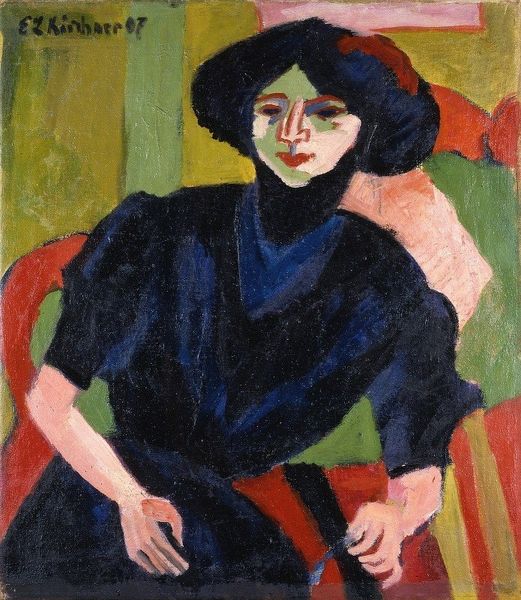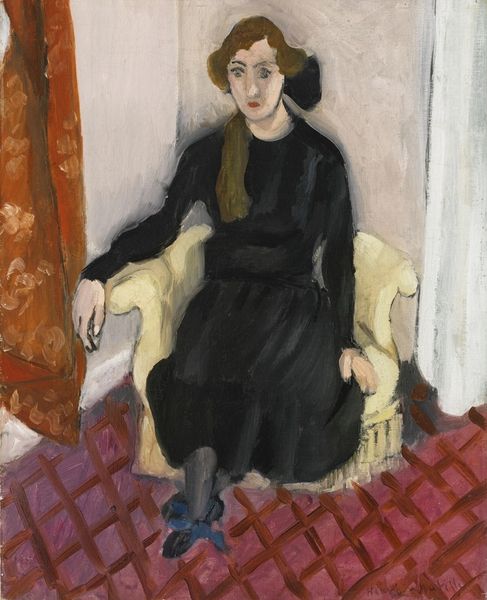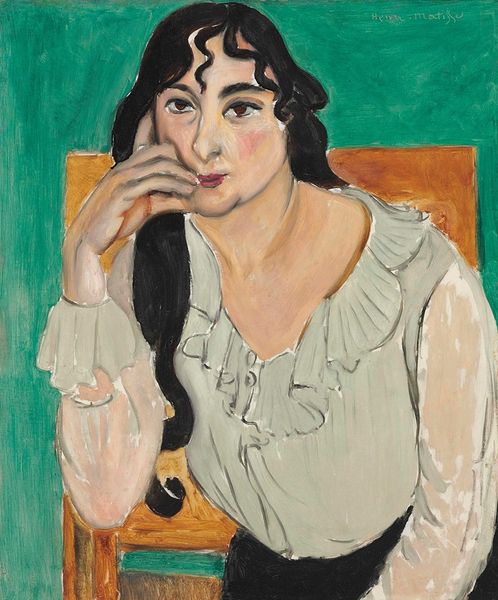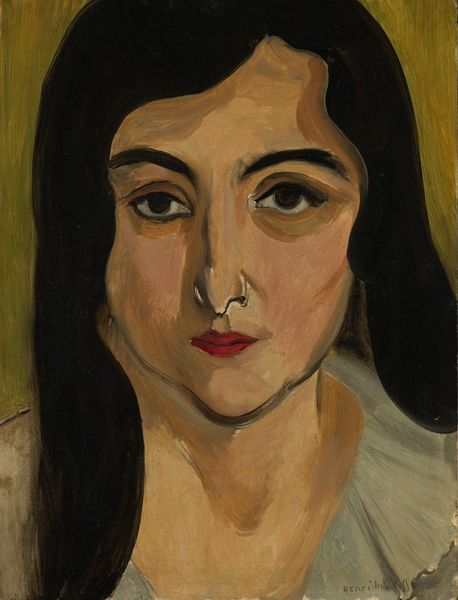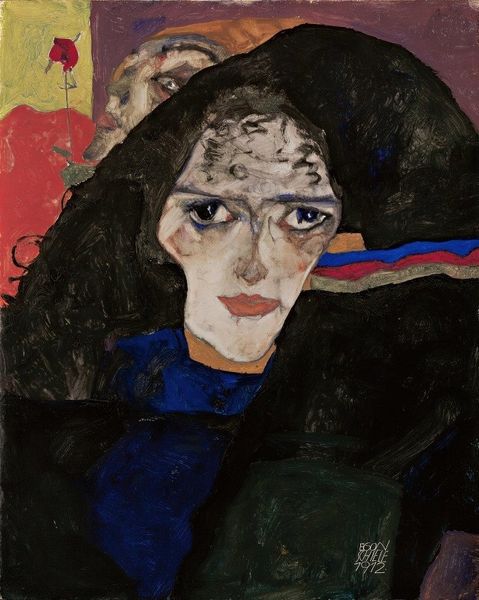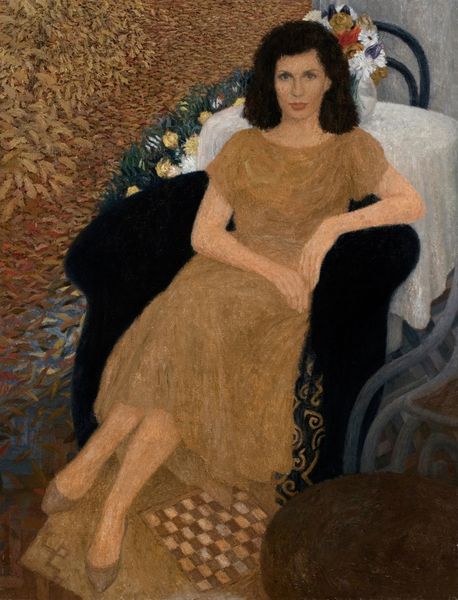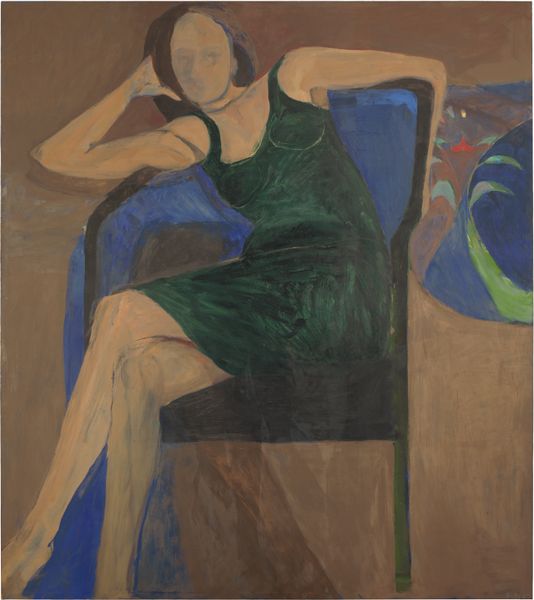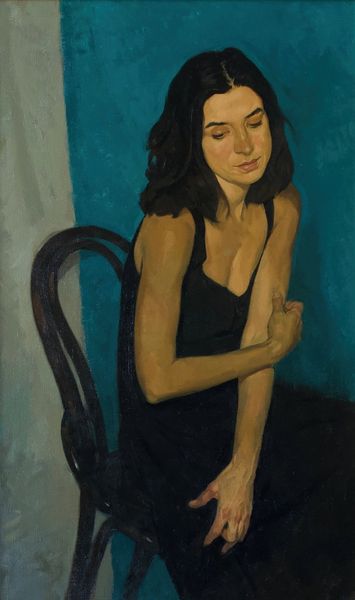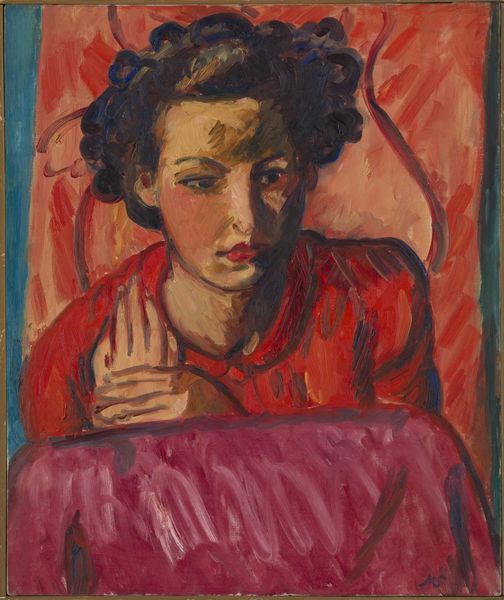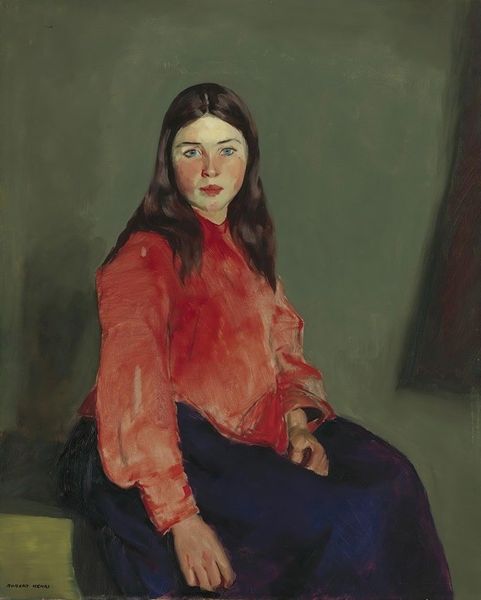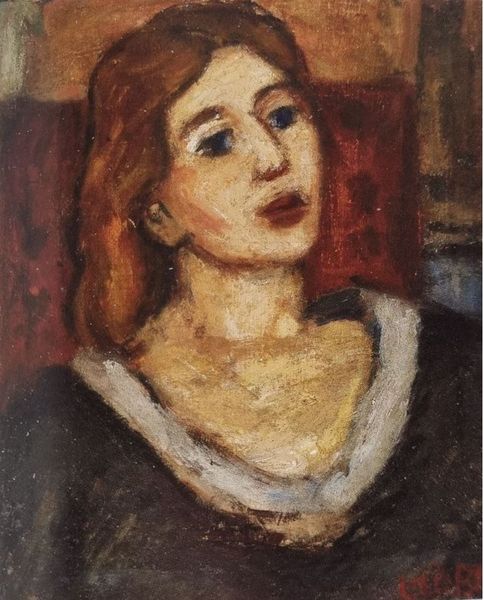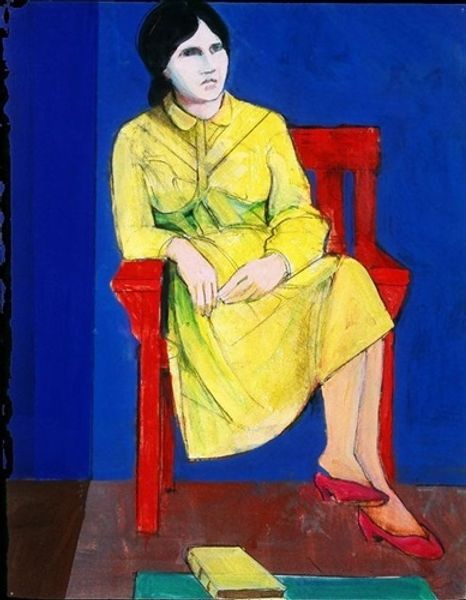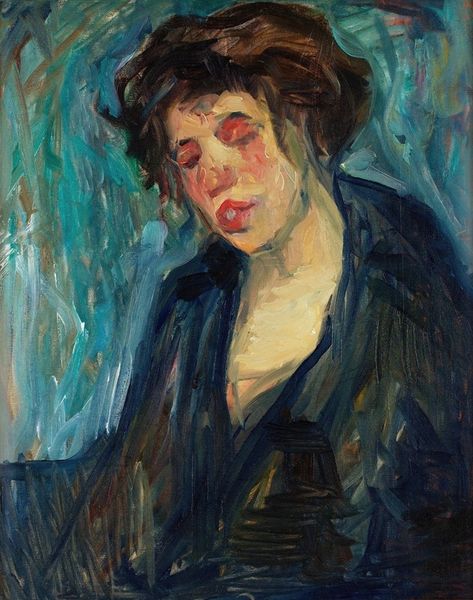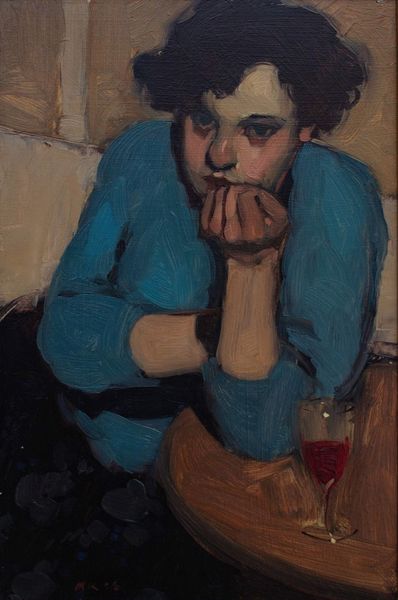
painting, oil-paint
#
portrait
#
painting
#
oil-paint
#
figuration
#
oil painting
#
portrait drawing
#
genre-painting
#
realism
Copyright: Panayiotis Tetsis,Fair Use
Curator: I’m struck immediately by the textural quality of this oil painting. The materiality, how present it is in this image. Editor: That's right. Here we have Panayiotis Tetsis's "Portrait of A.G," from 1954, a striking depiction of a woman in thoughtful repose. I am immediately drawn to the composition; her gaze, that heavy lidded expression, against that almost aggressively ultramarine backdrop. Curator: Indeed, look how he’s built up the paint in layers, especially on the red of her jumper. It's almost impasto in places, thick and luscious. You can really sense the hand of the artist, the labour involved in its creation. And that background, yes, is intriguing as a material artifact from a specific time in paint manufacturing history. Editor: Absolutely. The intensity of those colors jumps out—very daring. Do you see that the canvas practically vibrates, how the hues respond to one another and generate visual tension. And how do we understand that tension in relation to Greece in the 1950s? It feels very representative of a kind of austere moment. Curator: Austerity definitely manifests in the stark contrasts; and how even in painting something so intimate like a portrait, the artist's presence feels central, the artistic labor as visible as the subject, elevating the ‘how’ and the material means of production alongside the portrait’s representational element. Editor: I find myself wondering, too, about this A.G. Who was she, and what role did portraiture play in Greek society at this time? Was this a commission, a gift, or a personal expression? How was such representation situated with notions of status, femininity, and class? It encourages us to delve into the public and cultural meaning of this image beyond just its surface appeal. Curator: Looking at the surface, as you mention, prompts the question if that bold, red jumper was ready made, from raw cloth cut from local markets, or fashioned at home, and what kind of clothing options were available to people then, because these options all create a different material history. Editor: Absolutely! It gives us so much to consider, and ultimately deepens our understanding of art's ability to speak to both the individual and collective experiences, beyond being just a window into a time and place. Curator: It encourages a perspective rooted in artistic and material processes that still affects us today.
Comments
No comments
Be the first to comment and join the conversation on the ultimate creative platform.
